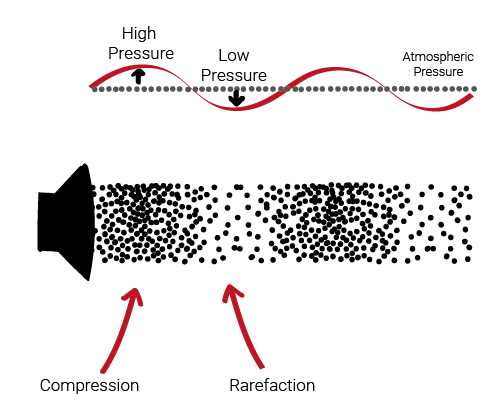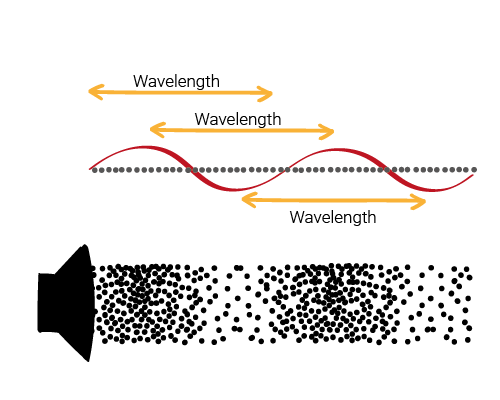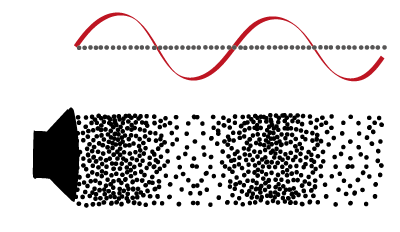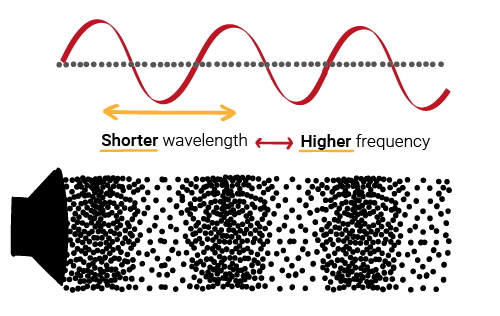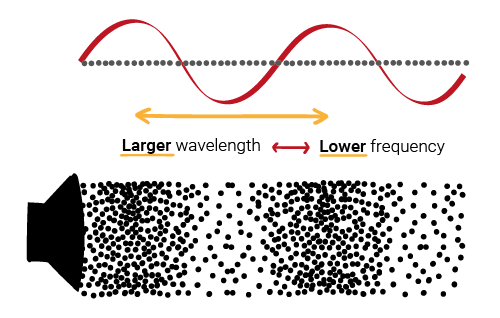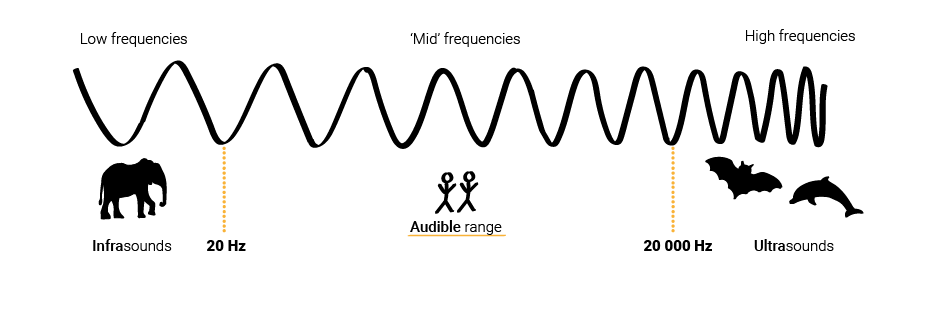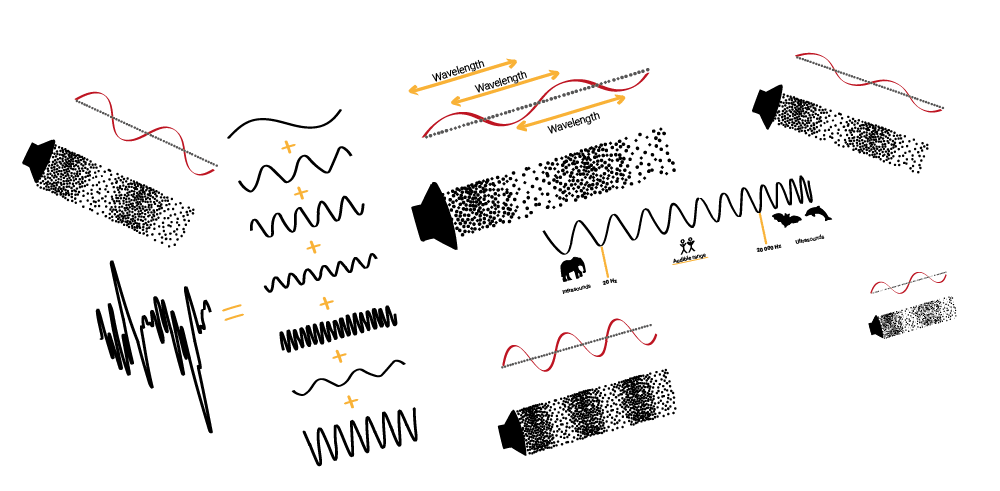
Are you new to acoustics or need a refresher on sound basics?
This article was created to dive into the fundamental concepts of sound including:
- Sound and sound waves
- Sound wavelength
- Sound amplitude
- Sound frequency
Enjoy the read!
(See at the end the references used to confirm the concepts)

Do you want to be notified when new posts are published?
Why don’t you subscribe to Atelier Crescendo’s newsletter by clicking here?
Understanding sound and sound waves
Sound originates from vibrating objects in various mediums like solids, liquids, and gases.
These vibrations cause air particles to move back and forth, creating compression and rarefaction.
Compression occurs when particles bunch together, generating a higher pressure.
Conversely, rarefaction leads to lower pressure as particles spread apart.
These alternating pressure fluctuations give rise to the sounds we perceive.
These pressure variations form sound waves, classified as longitudinal waves because the air particles move in the same direction as the vibrations.
In air, sound waves travel at around 343 meters per second (at 20°C).
Understanding amplitude
Sound amplitude reflects the change in pressure from vibrations. Put simply, it relates the number of air particles involved in the vibration process.
A sound with a greater amplitude will be perceived as louder (or with a higher volume).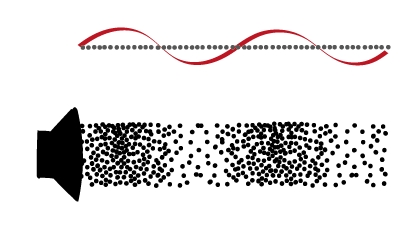
To measure amplitude, you use logarithmic decibels (dB).
For instance, a whisper might register around 30 dB, while a rock concert can reach a staggering 120 dB or higher.
Understanding frequencies
Frequencies, measured in Hertz (Hz), directly relate to sound wave speed divided by the wavelength.
- shorter wavelengths correspond to higher frequencies…
- whilst larger wavelengths align with lower frequencies.
Higher frequencies result in higher pitches, whilst lower frequencies create lower pitches. Listen below to some examples perfect pitches at different frequencies.
100 Hz
500 Hz
1000 Hz
10 kHz
Acoustic references
See below the references used to confirm the above concepts:
- Noise Control in Building Services – Sound Research Laboratories (SRL) Ltd – Pergamon Press
- Auditorium Acoustics and Architectural Design (Second Edition) – Michael Barron – Spon Press
- Sound Materials, A Compendium of Sound Absorbing Materials for Architecture and Design – Tyler Adams – Frame Publishers

